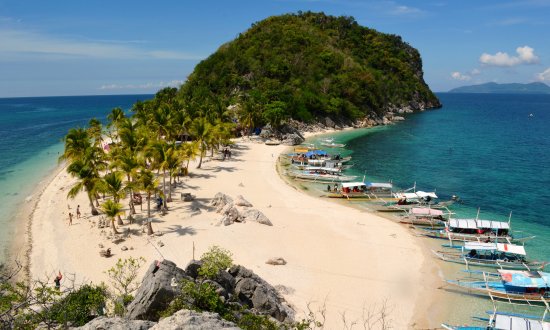
ILOILO – To preserve the environment of the Gigantes group of islands, a fledgling tourism destination in the municipality of Carles in northern Iloilo, tourism businesses there were told close shop temporarily and do some cleanup.
Tourism regional director Helen Catalbas termed it “self-closure.”
“Mga three to four months lang,” said Catalbas during yesterday’s Northern Iloilo Cruise Tourism Ocular Inspection and Stakeholders Dialogue at the provincial capitol.
A “preventive measure”, Catalbas said the temporary closure would give stakeholders time to prepare the islands – remove garbage and fix or improve facilities, among others – for the deluge of tourists.
It was not clear, however, if the “self-closure” should be done on a regular basis, say annually, or just one time, and the ideal time to do this.
Islas de Gigantes is an island chain of about 10 islands; the two largest are Gigantes Norte (North Gigantes) and Gigantes Sur (South Gigantes). According to the 2010 census, it has a population of 12,224.
Among its minor islets are Bulubadiang, Gigantillo and Gigantuna southeast of Gigantes Norte, and Antonia, Bantigui, Cabugao, Tanguingui, and Turnina south of Gigantes Sur.
The Gigantes group of islands boasts of white sand beaches, sand bars and pristine waters. One of its more popular points of interest is a saltwater lagoon called Tangke located within Gigantes Sur. Tangke is surrounded by cliffs.
Summers are when tourists come in droves to Islas de Gigantes.
“The ball is in the lands of the local government unit of Carles,” said Catalbas.
Tourism stakeholders in Carles should be consulted, according to Mayor Sigfredo Betita.
Six months of closure such as what is currently being observed in Boracay Island is too long, he said.
Betita warned of the economic dislocation of the employees of tourism establishments.
“Siguro pila lang ka semana, i-improve lang nila ang pasilidad,” said Betita.
The mayor said the local government must be prepared with alternative livelihoods for the displaced workers of some 36 tourism establishments.
Each establishment, he said, employs an average of 10 people.
Acknowledging the impact of tourism to Islas de Gigantes’ ecology, Betita said he may form a body tasked to monitor the tourism establishments’ compliance to environmental laws.
Since January this year, some 30,000 domestic and foreign tourists already visited the islands, said Betita./PN



